
Plan for a Portion of the Emerald Necklace
The Olmsted-designed parkways, an integral element of the Olmsted system, include The Fenway, The Riverway, The Jamaicaway, and The Arborway. They were designed for pleasure drives, following the meanderings of the Muddy River watercourse. They were completed by 1895.
Image: Frederick Law Olmsted National Historic Site 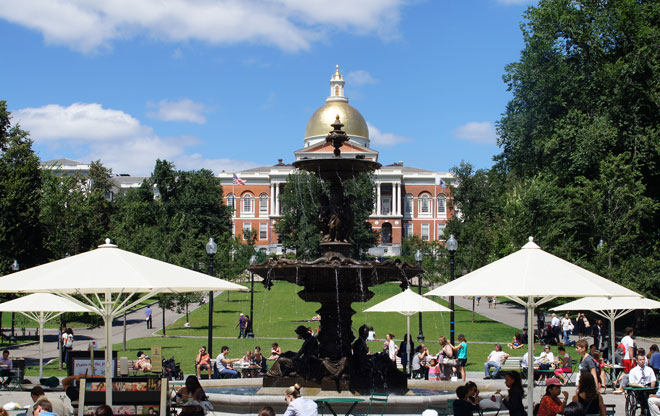
Brewer Fountain Plaza and Liberty Mall
From here, you can see the Bullfinch State House.
Image: Marion Pressley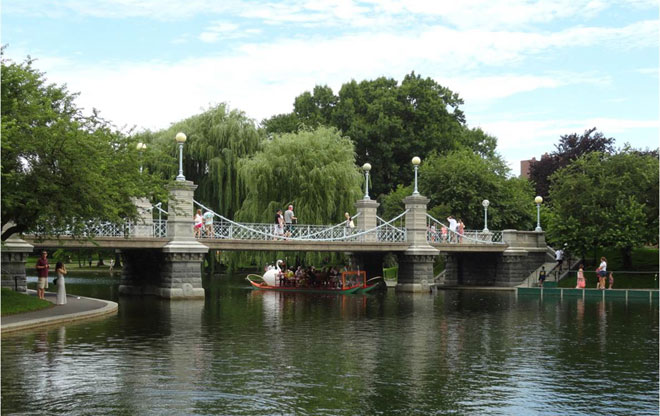
Boston Public Garden
A view of Lagoon iron bridge, designed by William G. Preston in 1867, along with the Swan Boats, which were designed by Robert Paget in 1877.
Image: Marion Pressley 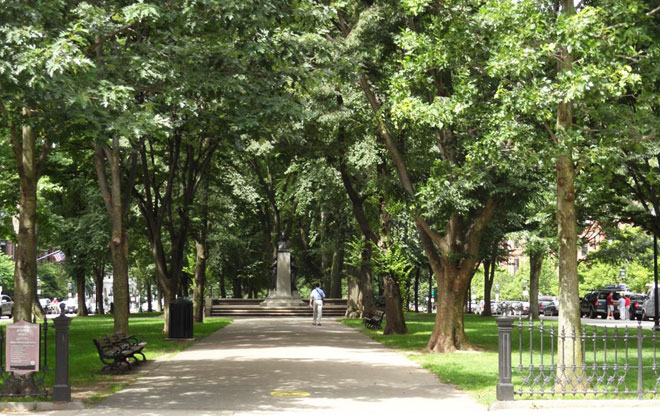
Commonwealth Avenue Mall
Commonwealth Avenue (1856-1881), a grand avenue or boulevard, is the nine-block central spine of the 19th century Back Bay neighborhood that connects Boston Common (1634) and the Public Garden (1837) to the Olmsted-designed string of parks and parkways at Charlesgate.
Image: Marion Pressley .jpg?n=1369)
The Riverway
A system of walks, drives, and bridle paths were designed by Olmsted for movement within the parks and to link to the surrounding neighborhoods in order to provide citizens a respite from city living. This is a view of The Riverway pedestrian and bridle path bridges near the Longfellow MBTA station.
Image: Marion Pressley 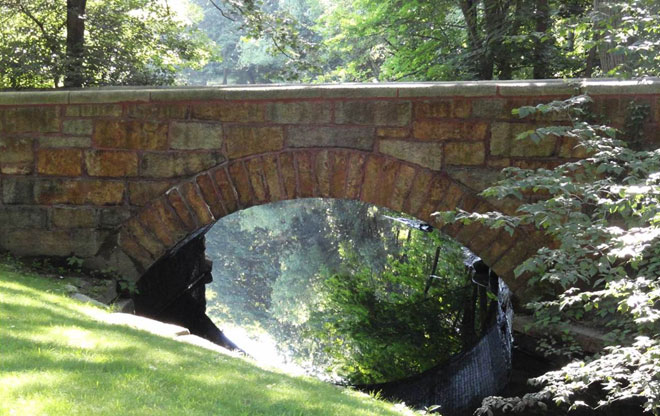
Olmsted Park
A view of the Leverett Pond footbridge on the Brookline side.
Image: Marion Pressley 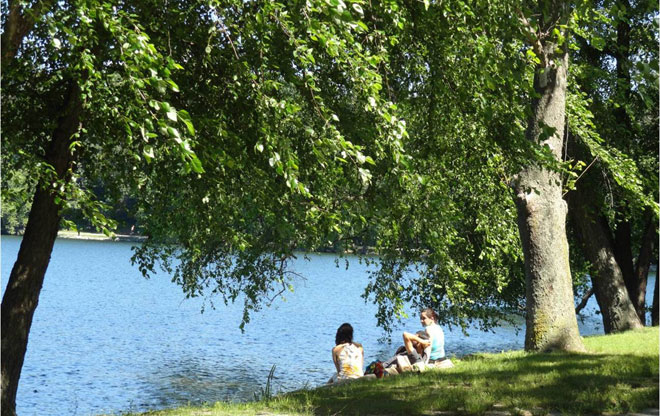
Jamaica Pond
“While there are many things, both small and great, which may contribute to the beauty of a great city, unquestionably one of the greatest is a comprehensive system of Parks and Parkways.” -- Olmsted Brothers, 1903.
Image: Marion Pressley 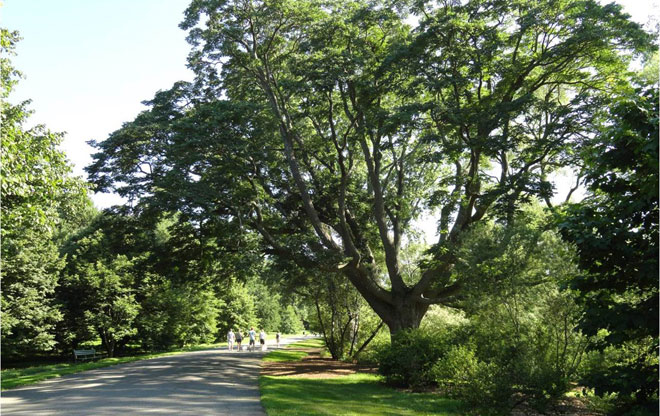
Arnold Arboretum
A view of the main drive.
Image: Marion Pressley 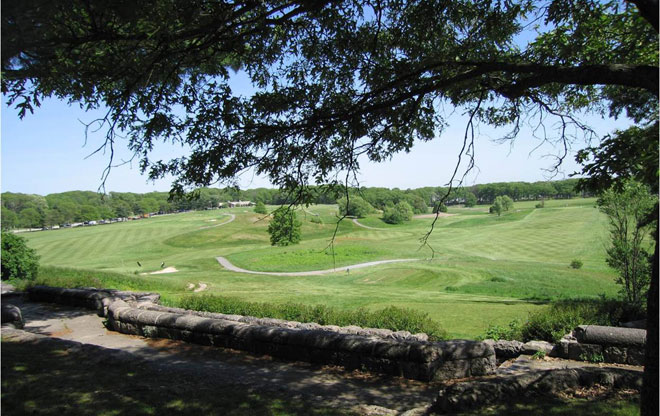
Franklin Park
A view from Schoolmaster Hill over the Country Meadow.
Image: Marion Pressley